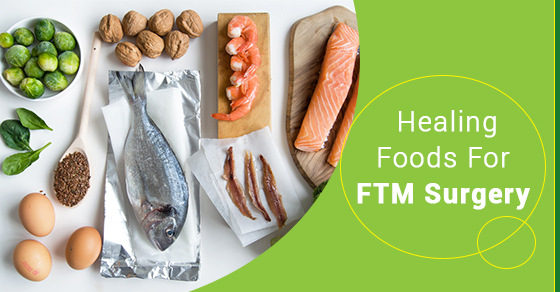
Consider a caveman diet if you're interested in losing weight. This type of diet allows you to eat foods that were readily available in prehistoric times. It generally excludes cooked foods and contains fewer carbohydrates. By following a caveman diet, you can expect to burn excess body fat while maintaining a balanced energy level. The caveman diet is a great way to lose excess body fat while maintaining a balanced energy level. Read on for more details.
Caveman diet includes meat, fish and dairy products. These foods are considered healthy and part of a balanced diet by the MyPyramid (an updated version of the Food Guide Pyramid). Healthy adults should consume at least three cups of lowfat dairy products every day. The caveman diet also limits grains, although it's important to remember that whole grains are an essential part of a healthy diet. While this diet might sound good for an average person, pregnant women shouldn't eat it because of the potential for adverse effects on their baby's health.

A caveman diet is not for everyone, and it may not work for everyone. If you're new to the caveman diet, start slow and follow the guidelines during open meals. This will ensure that you adhere to the program and avoid binging. However, you should be ready to accept occasional temptations to cheat. Some people find it difficult to stick to strict diets for the first few working days. If you are not sure about whether this method is right for you, try it out! It will help you to lose weight.
Caveman diets may not encourage exercise but do recommend that people do some form of physical activity. While some recommend no exercise, others encourage you to get outside and hunt and gather. It would have required a lot of physical activity to survive, considering that the Paleolithic period was spent hunting and gathering food. The caveman diet doesn't allow for grains.
Caveman diets are easy to follow and require less time. The caveman diet allows you to make large pots soups and stews which can last for many days. The caveman's diet is very similar with a ketogenic one, but there are important differences. Other than the lower carbs, caveman's dietary needs are more strict than a ketogenic.

Cavemans are active at a higher level. Caveman food is more active, but less processed. The caveman diet doesn't care as much about the kind of meat, but more about the fats and protein. It eliminates milk and gluten, two foods that were common in the Neolithic. This diet is great for people with diabetes but not for everyone. This diet is best for beginners.
FAQ
Is there a difference in a chef and a cooker?
A chef prepares food for other people. A cook prepares food for his or her own consumption. While both jobs involve preparing food, a chef works directly with customers. This means that they can have to decide what food to serve customers based their preferences. A cook does not interact with customers. Instead, a cook makes sure the food tastes good before delivering it to customers.
What are the Qualifications to be a Chef
To be a chef you need a bachelor's level in culinary arts. In addition, you need to pass a series of tests administered by the ACF. Once you've completed these requirements, you'll receive a certificate verifying your qualifications.
What equipment do I need to cook?
To learn to cook, you don’t need to have any special equipment. The right tools can make cooking much easier. For example, you could use a knife instead of a fork to eat pasta or a whisk instead of a hand mixer to whip egg whites into stiff peaks. Having the right tools can make cooking less daunting and allow you to get started faster.
Statistics
- The median pay for a chef or head cook is $53,380 per year or $25.66/hour, according to the U.S. Bureau of Labor Statistics (BLS). (learnhowtobecome.org)
- In the United States, the category is estimated at $23.2 billion annually and is growing faster than the market. (washingtonpost.com)
- According to the BLS, chefs earn $58,740 a year. (learnhowtobecome.org)
External Links
How To
How to make the perfect omelet
Omelets are one of my favorite foods to eat at breakfast. But how do you make them perfectly? I've tried many different methods and recipes, but none of them seem to work! So I am sharing some tips and tricks today to help you make fluffy, delicious omelets every morning.
When making omelets, it is important to be aware that eggs can be temperamental. You must get them fresh, organically, and keep them cold until you cook. If they are not kept cold enough, the whites won’t form properly. The yolks will also break down too quickly and become runny. This can make your omelets look bizarrely colored. It is best to use room-temperature eggs if you are going to cook them right away.
You can also separate the egg before you add it to the pan. Because this could cause your omelet to become curdled, you don't want any yolk to be mixed with any white.
You might burn the bottom of the egg if you place the egg directly on the stovetop. This could ruin the texture of your omelet. Instead, microwave the egg for 10 seconds before adding it to the pan. The microwave heat cooks the eggs just right without overcooking them.
Next, let’s talk about mixing the egg. You want to mix the eggs thoroughly before you add them. Turn the bowl upside down and grab the whisk to do this. Next, shake the bowl vigorously. This will whip the air around the bowl and mix the egg well.
The fun part is now - adding the milk to the mixture. Mix half of the milk with the eggs. Then fold the eggs in half into the remaining milk. Do not worry if you see streaks of egg; they will disappear when the omelet is flipped.
After folding the eggs, place the pan on medium heat and wait for the oil to start sizzling. Once the oil begins to heat, add 1/4 cup butter and swirl the pan to coat it. Open the lid and sprinkle salt on the pan. An additional pinch of salt will prevent the omelet form sticking to your pan.
Once the omelet has formed completely, cover the pan and let it set for a few minutes. Flip the omelet upside down or with a spatula. Cook the other half for another minute. Serve the omelet immediately by removing it from the pan.
This recipe works best using whole milk. Skimmed milk is also possible.